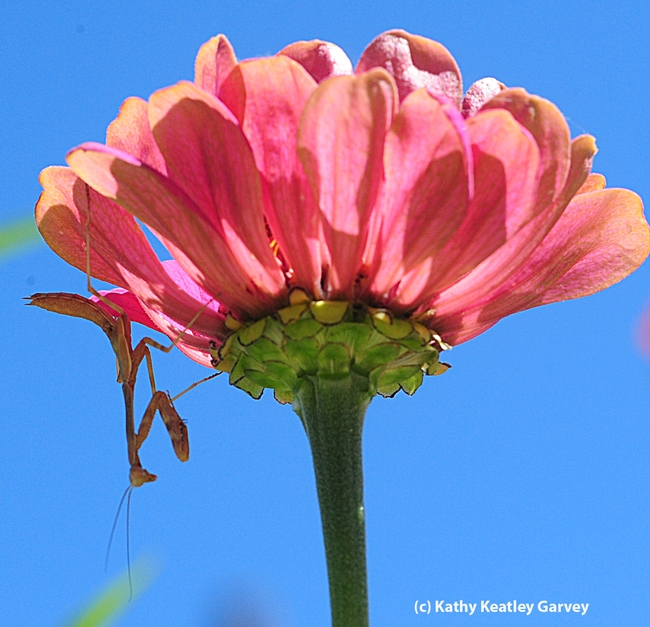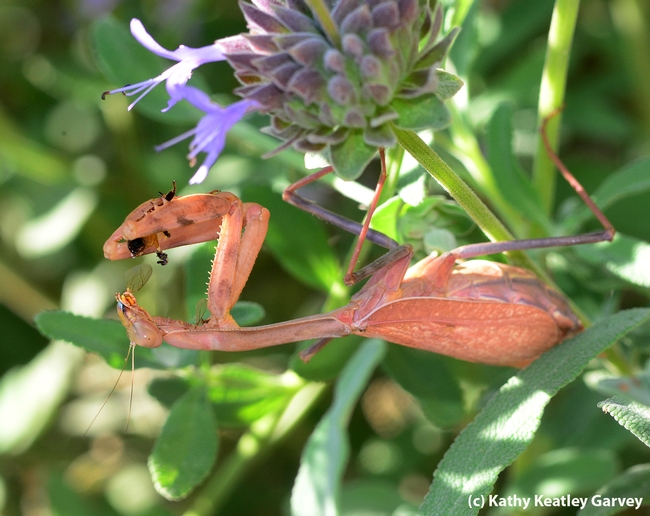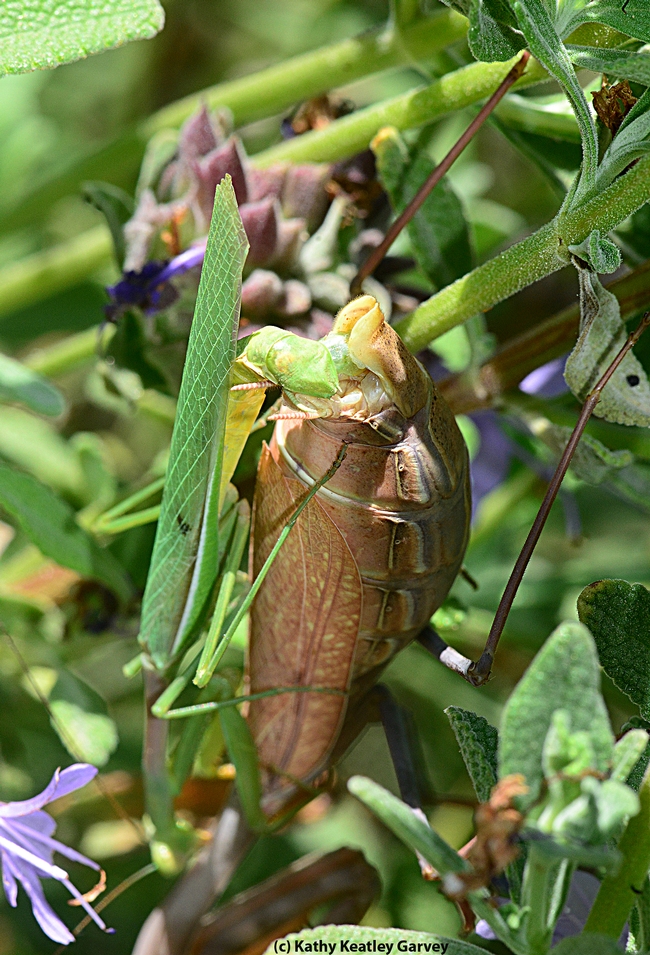Oh, the life of a praying mantis...
You can hang upside down like an acrobat, shading yourself from the sun while waiting for prey and avoiding predators. You can crawl beneath dense leaves, the better to ambush, snatch and eat an unsuspecting bee. And you can mate with a fine-looking specimen like yourself and produce some more fine-looking specimens.
Life doesn't get any better than this if you're a praying mantis. (Unless, of course, you're a male mantid and the female practices sexual cannibalism. Or, if you're a newly emerged offspring and your brothers and sisters are feasting on one another and then...eyeing you.)
Finding praying mantids is not so easy. Sometimes the slightest movement in the leaves will reveal their location. Sometimes when you water a plant, they'll emerge, looking quite irritated--if mantids can look irritated. Other times they're blatantly perched on top of a blossom or lurking beneath it.
Up until recently, we'd never actually seen them mating. But there they were that warm midsummer day on Sept. 17 in the Häagen-Dazs Honey Bee Haven doing just that. See, the praying mantids like to hang out in the bee garden because that's where the bees are. The half-acre garden is located next to bee research hives at the Harry H. Laidlaw Jr. Honey Bee Research Facility on Bee Biology Road, University of California, Davis.
Ah, we thought, a "lover-ly" photo to add to the educational collection of Lynn Kimsey, director of the Bohart Museum of Entomology and professor of entomology at the University of California, Davis.
So, we took a few photos, being careful not to interrupt them.
If this were a documentary being filmed about the birds 'n the bees, can't you just hear it? The Cole Porter hit, "Let's Do It," softly playing in the background:
...And that's why birds do it
Bees do it
Even educated fleas do it
Let's do it, let's fall in love.
All the while, the Cleveland or blue sage (Clevelandi salvia) stirs with life. A hummingbird, honey bees and carpenter bees drop down to investigate the blossoms and sip a little nectar. A garden spider patrols its sticky web. A scared lizard darts into the shadows.
Ants lumber by with their heavy loads. No sign of any "educated fleas," though.
Attached Images:


